Principles and Practice
Week 1
ASSIGNEMENT
- Plan and sketch a potential semester project
SOFTWARE USED
- Brackets
- Fusion 360
RESEARCH
This project has evolved a lot since the 2017 Fabacademy.
The idea was to make a soup machine,
very low in energy consumption, pulled behind a bike for a street vendor.
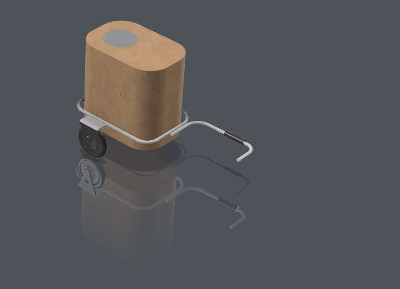
I could not see how to change the project started last year.
I found that it was unfinished in its final design.
Some problems remained difficult to solve, autonomy was not real; It was more an idea than a useful object.
I had a bit the impression to twist the project to make it attractive...
It blocked me for a while...
I thought that what seemed most useful to me,
and probably the most important part of the project was in its cooking mode.
Then I started doing tests of dishes, mostly soup.
To speed up the cooking, I passed the vegetables in a mixer to reduce them to a rather fine piece.
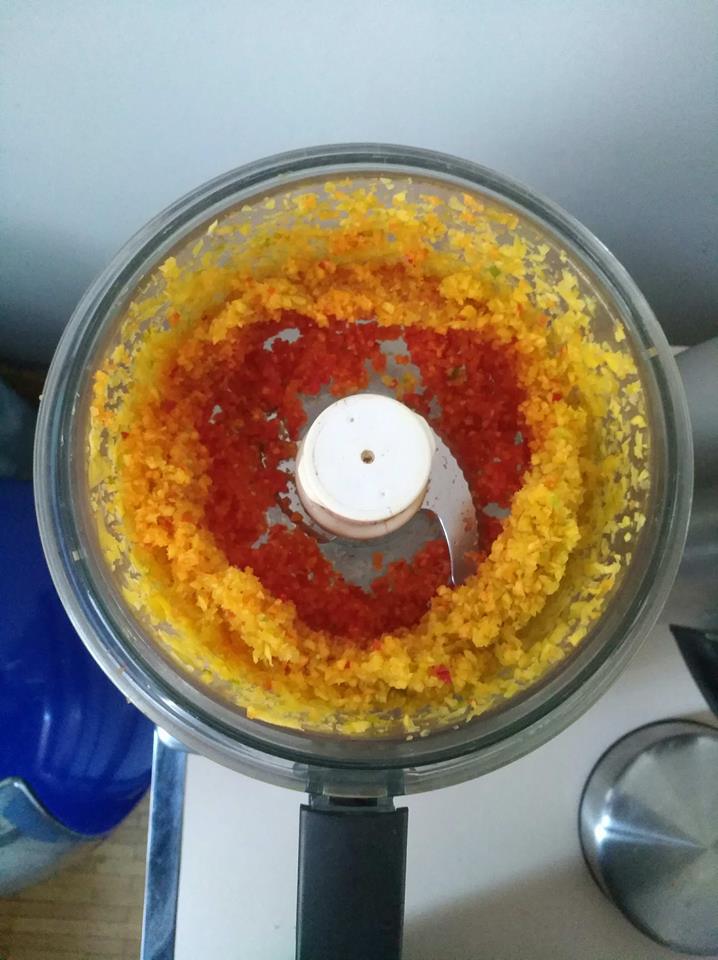
I tested the cooking in a bottle of wine in a bain-marie
A manual air pump is used to evacuate the wine bottle.
I wanted to test this to see if glass could be an alternative to the plastic bag in sous-vide cooking.
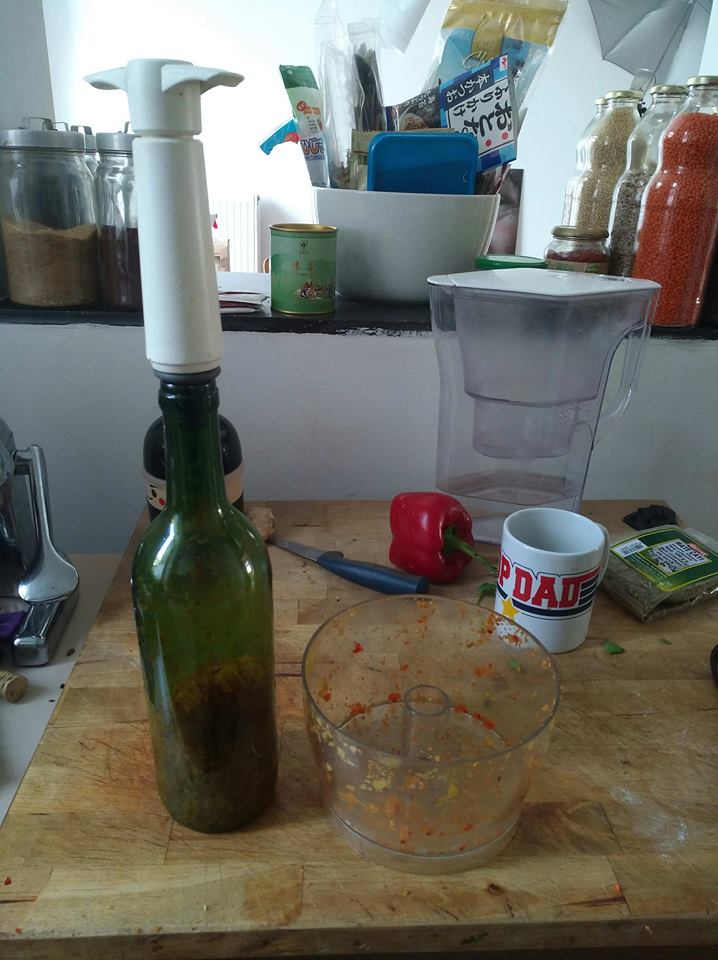
The result was inconclusive after 20 minutes of 100 degree water bath.
At 45 minutes the vegetables began to have a more melting consistency.
I started to focus on sous-vide cooking and was impressed by the amount of articles, books, videos about it.
Indeed, I always remained in the idea of setting up a simple process of soup cooking.
Vegetables cook perfectly between 82 and 85 degrees Centigrade in a bain-marie
This will depend on the size of the cut vegetable pieces,
the type of vegetables and the desired texture.
This technique has been used for many years by many starred chefs.
It seemed to me at first far from what I wanted to develop.
What I wanted was a simple way to cook
easy to reproduce for people who had little training in cooking.
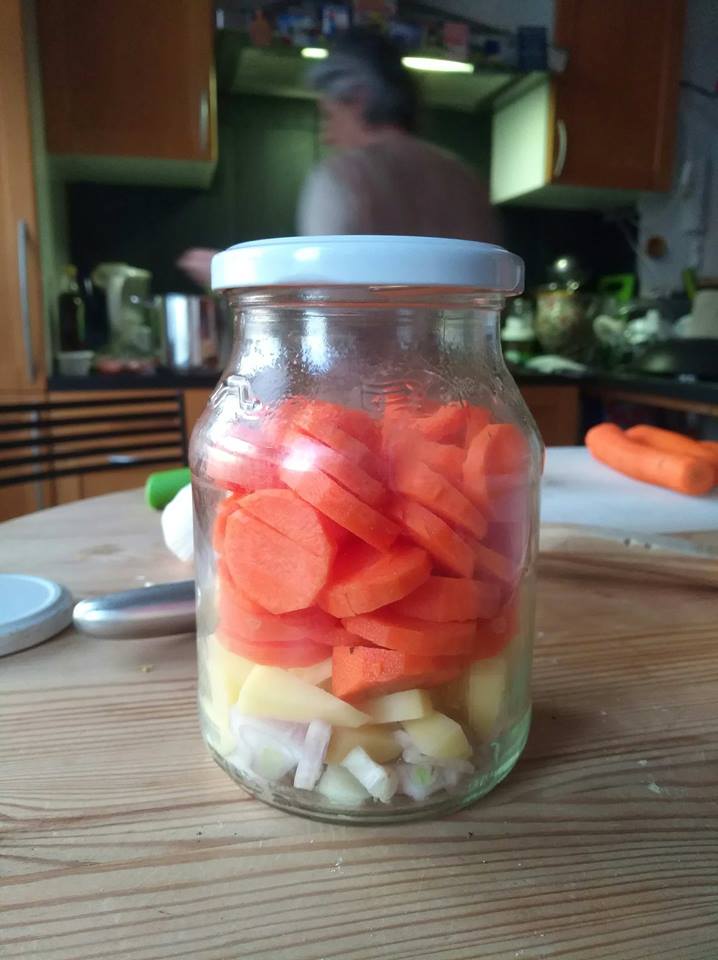
The use of plastic bags for this type of cooking also bothered me.
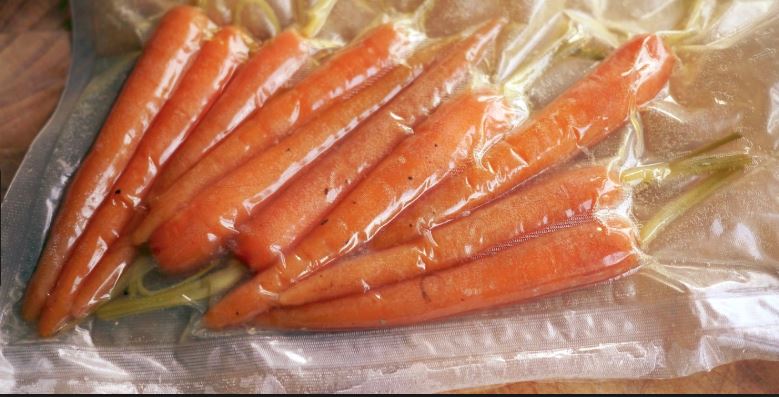
The articles I have read about the danger of plastic bottled water
despite the precautions taken by water producers give me little confidence in the use of plastics for cooking.
Here we can see figures showing temperatures and cooking times.
The temperature range is 54 to 83 degrees centigrade.
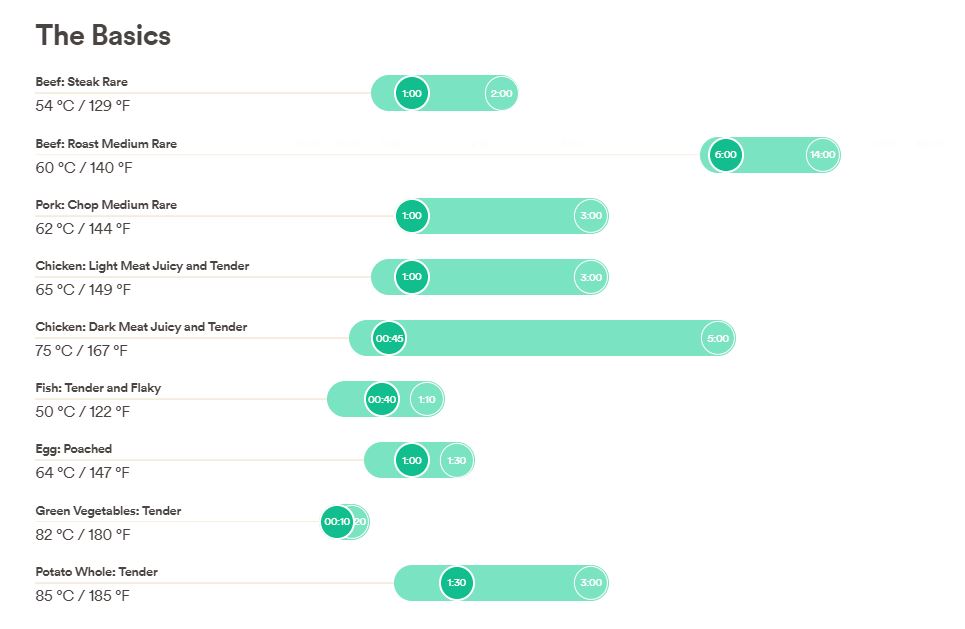
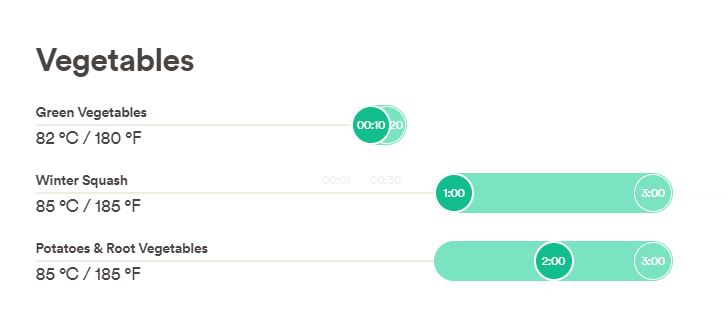
The relationship between time and temperature was not obvious to me.
I went to see a professional cook to discuss it with him.
It gave me the chance to test a chicken breast cooking in an oven and cooking sous-vide.
The difference in taste and texture is striking.
Savourful and pleasant to chew under vacuum and dry and almost cardboard baking with an oven.
He explained to me that time did not change the fact of having cooked food, but the texture.
The longer the cooking time, after the minimum time, the more the food will be tender.
A crunchy vegetable will be cooked with the minimum time value indicated in the attached table for example.
It is also necessary to adapt to the size of the pieces so that the food could be cooked to the center.
In parallel with my tests and researchs, I worked with my friend Isabelle to compare her way of cooking soups (which are delicious ...)
and that made with the same ingredients that I prepared and cooked in a bain-marie.
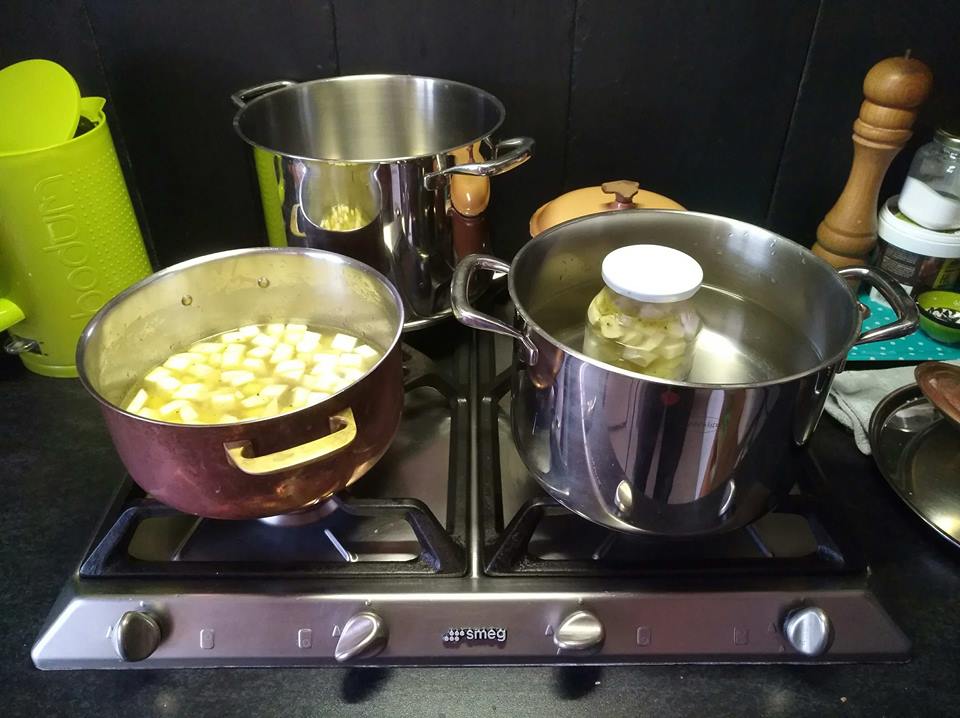
The taste was quite similar..
Even if the seasoning was quite difficult to achieve in a jar.
The cooking time has increased from 45 minutes in traditional cooking to 2 hours in a jar in a bain-marie.
I thought other people had probably tested cooking in jar.
In the USA, a type of jar is widely used for preserving food, jams ...
These are the Mason Jars.
I started to look at some websites and videos that speak of this way of cooking
It corresponds much more to what I wish: Cook with the least possible risk to health.
It goes through some strange projects, like this one:
how to cook with a dishwasher.
to simpler projects likethis one:
5 Easy Instant Soup Cups
I also found a vacuum cooker from Anova in a second-hand shop that I bought to test it.
Unconvincing actually.
BASIC PRINCIPLE: what it does and who will use it.
After making the researches , I decided to developp this project :
The idea of the project is to make a plug that allows to control different cooking appliances:
Immersion heaters, rice-cooker or electric plate and to maintain water at a precise temperature for a given time.
in a bain-marie at a given temperature and time in dishes packaged in jars.
This project is trying to reduce what is needed to use this cooking technique.
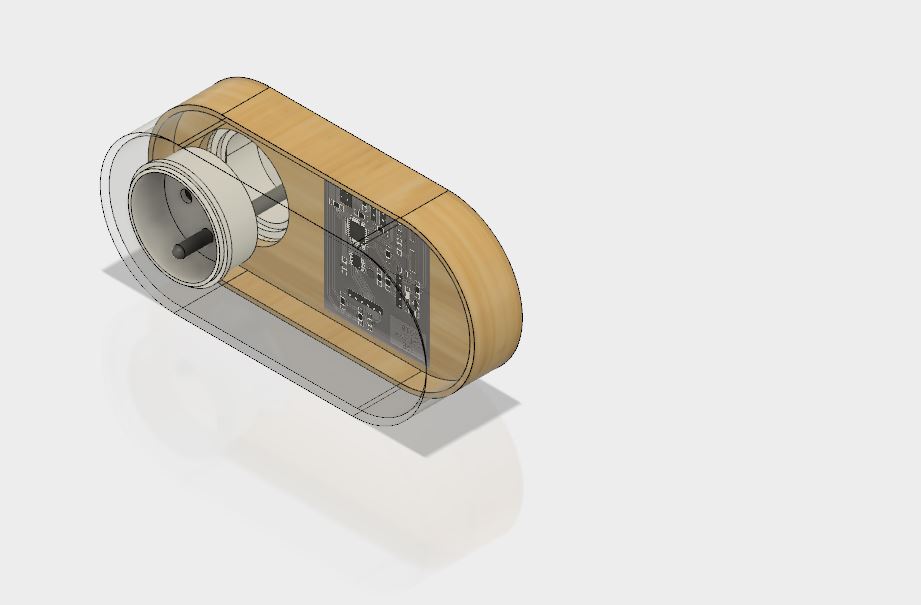
HOME FINAL PROJECT